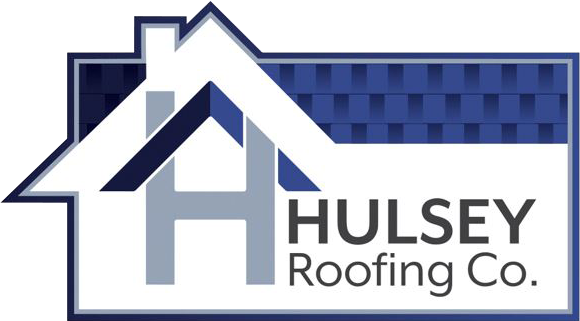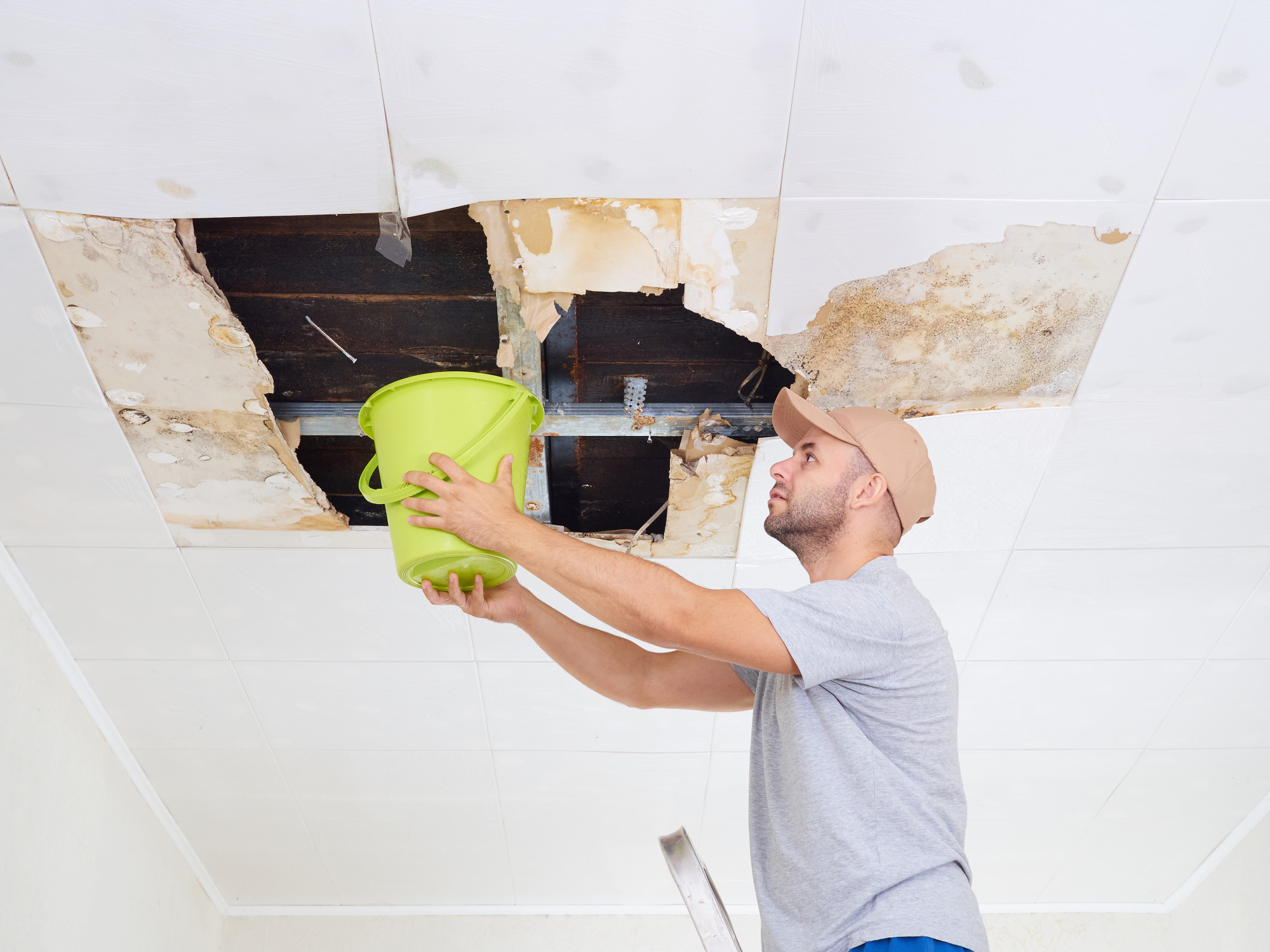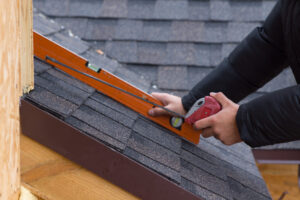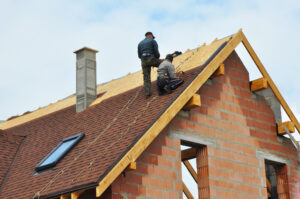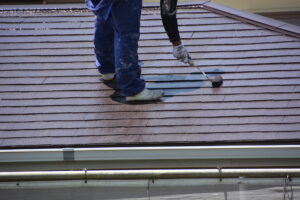Roof leaks rank among the most alarming problems that homeowners can face. If they are not tackled rapidly and successfully, they can have significant issues with snowball.
Unfortunately, many homeowners don’t know what to do if they think they have a roof leak. Is there something their insurance is going to cover? How do they know that?
Here’s everything you need to do about treating roof leaks and getting homeowners insurance to cover the expenses.
Homeowner’s Insurance Basics
Does homeowner’s insurance cover roof leaks? To some degree, the answer depends on what type of homeowners insurance you have.
Homeowners with comprehensive coverage are more likely to be covered no matter what misfortunes befall their homes. Homeowners with named peril policies may have more selective coverage.
What kind of roofing you have will play a part, too. The typical homeowner policy would cover most forms of roofing. However, if you live in an environment of extreme weather and prefer a roofing material that is not suited to your environment, you might be in trouble.
When in doubt, it’s a smart idea to check your insurance policies to make sure you know what kind of coverage you have before something happens to your roof.
What Insurance Covers
So, When are roof leaks covered by home insurance? In most cases, insurance covers roof leaks when they are the result of:
- A named peril such as a house fire or a storm
- A sudden and inevitable accident such as a tree falling on your roof
- Severe weather conditions such as an ice storm
In fact, homeowners insurance will cover not only the cost of repairing the roof but also the costs of repairing any damage done to the rest of the house or your possessions as a result of the leak.
Importantly, the key factors in determining this coverage are that the cause of the damage was:
- Unpredictable
- Unavoidable
- Sudden
- Unintentional
While these are the standard coverage rules, it is also crucial that homeowners review their policies because coverage exceptions can apply.
What Insurance Doesn’t Cover
However, when are roof leaks not covered by home insurance?
Put simply, your insurer may deny you coverage if:
- The leak results from intentional action on your part
- It is caused by your failure to properly maintain your roof
- It may be the result of natural wear and tear
- Your roof has exceeded its natural life
- Your roof is made from an unapproved or unsafe material
- You knew about the leak or weakness in your roof and did nothing to correct it
- The leak results from severe weather conditions or events not covered by your policy
Intentional Damage
If you intentionally damage your roof or engage in unsafe or unreasonable activities that result in roof damage, your insurer will not pay for repairs. This is exceptionally rare but worth being aware of.
Age or Wear and Tear
All roofing materials have a limited lifespan and slowly degrade over time due to general wear and tear. It is your duty, as a homeowner, to fix or rebuild your roof until the natural consequences of aging result in problematic leakage.
After a period of time, typically 20 to 25 years for shingle roofs, the insurers will cease to cover any roof repairs at all because your roof has outlived its expected existence. You would need to repair the roof with new and suitable materials to restore coverage.
Failure to Maintain
Your homeowners’ insurance policy is focused on knowing that you will take reasonable measures to preserve and protect your house. If you do not conduct sufficient maintenance to maintain the roof in good condition, your insurer will determine that any resulting leaks are the direct product of your incompetence and will fail to pay your claims.
In the same way, if you hear of damage to your roof, such as shingles being swept off in a storm or animals taking up residence, and do not take prompt and sufficient measures to fix the issue, you will also jeopardize your coverage.
Exempt Events
Many policies contain “acts of God” clauses that exempt them from covering damage caused by:
- Freak acts of nature such as tornadoes or floods in areas where those are rare
- Damage caused by government action
- Damage caused by civil unrest or acts of war
In many cases, you can get insurance that covers otherwise exempt circumstances, but it often requires adding special riders to your policy.
How to Find Roof Leaks
In worst-case situations, the first warning that you have a leaked roof could be indicators of water damage to your ceiling, or that water simply spills through your ceiling into the rooms below. If this occurs, you have a few choices to decide where the leak is coming from.
The best thing to do is go outside and physically inspect your roof. Look for broken shingles, torn-out flashing, and other apparent destruction.
If that doesn’t fit, you might need to go to the attic and look at the underside of your roof from there. Check for damp patches, molds, stains, or staining.
If you aren’t successful in identifying the source of the leak, call a professional right away. They will have more experience and more tools for finding the source of the leak.
What to Do if You Discover a Roof Leak
It is important to know the steps to take if you have a roof leak. It is equally important that you act on those steps right away should you discover a leak. Acting fast will:
- Minimize the overall damage
- Minimize the costs of repairing the damage
- Maximize your chances of getting the whole cost covered by your insurance
Fortunately, the steps are simple and easy to follow.
First, if possible, identify where the leak is coming from.
Second, record the dilemma and the damage the best you can. Take images, write notes, and otherwise record the source and effect of the destruction as clearly as possible.
Third, reduce damage and make temporary repairs to whatever degree you can. Shift chairs, belongings, and other things out of the water’s reach.
Place buckets or towels underneath the leak to catch the water and stop further damage. If necessary, use fans or other methods to dry drenched rooms.
Cover the damaged section of your roof with a tarp to prevent further water incursion. If you cannot do this yourself, place an emergency call to a roofing company so that they can do it for you.
This step is critical. It demonstrates to your insurer that you took all appropriate action to address the problem and prevent further damage.
Finally, contact your insurance company to let them know about the leak. Your agent can assist you in the claim filing process.
Filing a Claim
Do you know how to file an insurance claim for a roof damaged by a leak? If not, it’s much simpler than most homeowners expect.
- Document the damage using photos, video, and any other tools at your disposal
- Have a professional roofer assess the damage and provide you with a quote for the necessary repair work
- Contact your insurance company and provide them with both your documentation and the roofer’s quote
- Complete any claims paperwork the agent sends you
When this has been completed, the roofer will do the maintenance work and the insurance provider will compensate you for the actual cost of the work. If you have not made any previous claims during the year, you will need to pay up to the cost of the premium before the insurer continues covering the remainder.
How Much Does a Roof Leak Cost to Fix?
A small leak caught early can cost as little as $150 to repair. Severe storm damage can cost as much as $3,000 to fix. The average job costs between $650 and $1,000.
Your actual costs will depend on:
- Where you live
- What kind of roofing you have
- How severe the damage is
- Demand for roofing services in your area
- Your roof’s characteristics (e.g. size, pitch, and complexity)
Protecting Your Roof
The best way to prevent roof leaks is to be proactive about roof maintenance.
- Have your roof inspected by a professional
- Have a professional roofer make any repairs your roof needs
- Document the state of your roof so that you can prove the difference between its pre-existing condition and its damaged condition should something happen
- If your roof is in poor condition or reaching the end of its natural lifespan, make plans to get a new roof
- Make a habit of checking your roof seasonally and after bad storms so that you can identify and repair the damage right away if it occurs
- Review your homeowners policy to make sure that you understand your coverage and that you have the right coverage for your needs
Get a Quote
Don’t take a risk on roof leaks. Schedule a roof inspection today to make sure your roof is in good condition or to get a quote on repairs.
